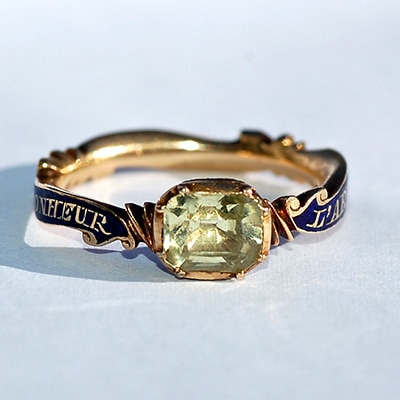L’abbess des marchands de bonheur
Abbess or Mother Abbess: A woman who runs a brothel, a madam (archaic, British slang). See A Dictionary of the Vulgar Tongue – A Dictionary of Buckish Slang, University Wit and Pickpocket Eloquence by Francis Grose [1788].
In the late 18th century in England the madam of a brothel was known as an ‘abbess’ and the courtesans in her establishment were referred to as ‘nuns’. The practice of courtesans dressing in religious attire was accepted at the very highest levels of society. King’s Place, a passage running between King’s Street and Pall Mall, was home to England’s most exclusive brothels, known as ‘nunneries’ which were patronised by royalty and the aristocracy. The Times in 1786 and 1788 exposed some of the ‘Mother Abbesses’ who ran these exclusive establishments, such as the Little Harpy of Iniquity from Germyn-street who went with her meretricious attendants to the theatre and the pleasure gardens, Mammy Windsor of King’s Place and Mother Johnson who went in an elaborate carriage in the Queen’s Birthday Parade in 1788.
The ring is English, circa 1780, with an inscription on the hoop in French. This was not uncommon at the time as messages of sentiment on English rings were often in French, the language of love. Yet this one has a very different meaning: L’abbess des marchands de bonheur or the abbess, seller of happiness. So, this ring was presumably for an ‘abbess’, a purveyor of good times and happiness. It is 18 carat gold, with the motto in gold capitals on a royal blue ground. It is set with a chrysoberyl in a foiled and closed back setting, a gem believed to protect the wearer from the evil eye. Ring size K [US 5 and 1/8]. A beautiful little ring and a wonderful pun.
Thanks to Patrick Boyd-Carpenter @pbcfineart for enlightening me about the 18th century interpretation of an abbess. I bow to your superior knowledge.
sold
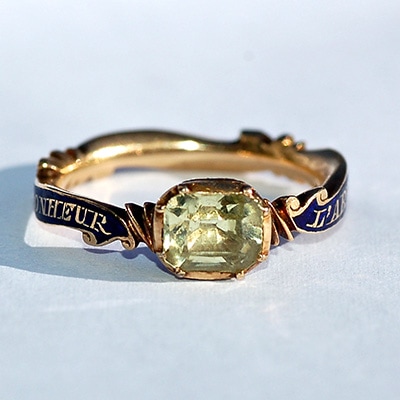
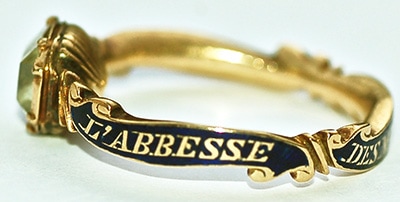
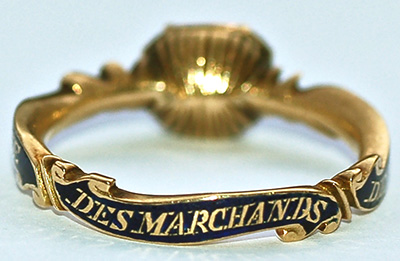
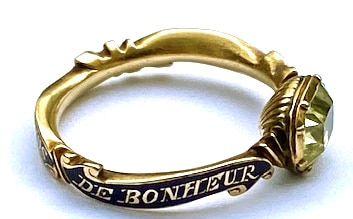

The Fair Nun Umask’d [British Museum]

